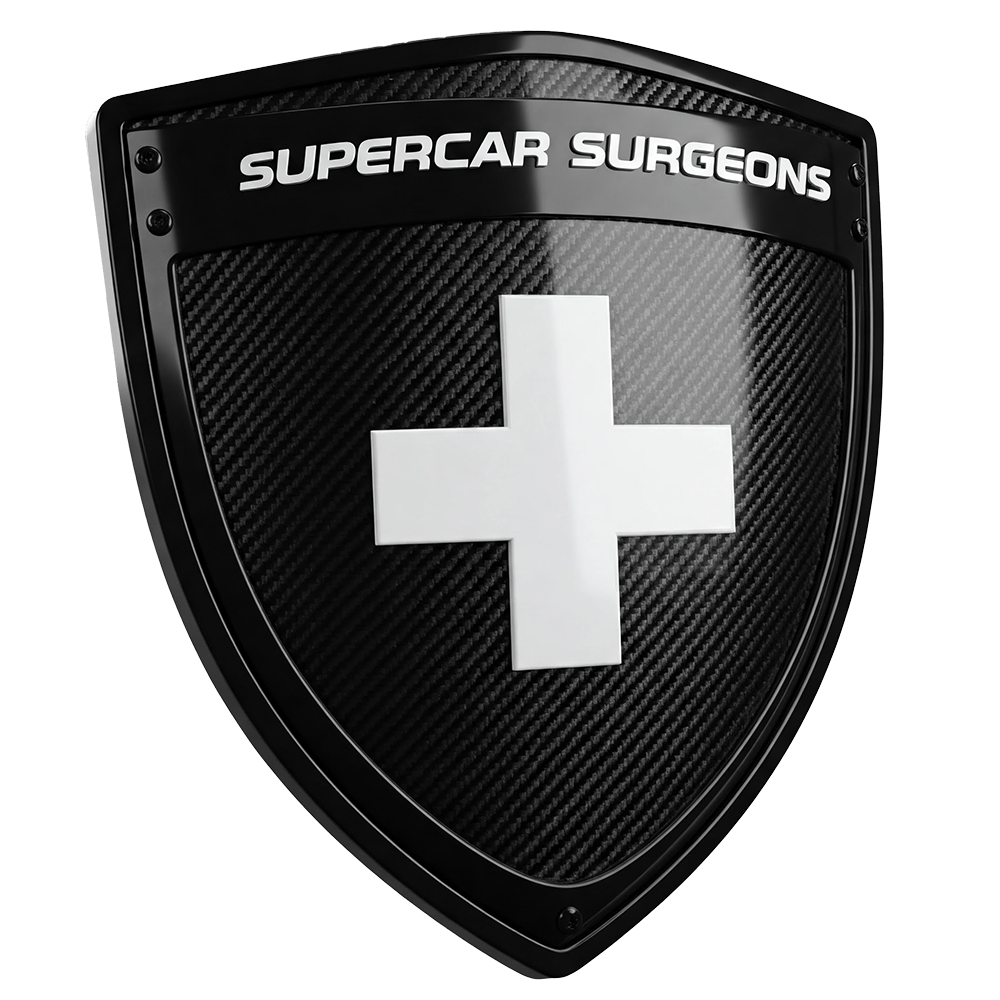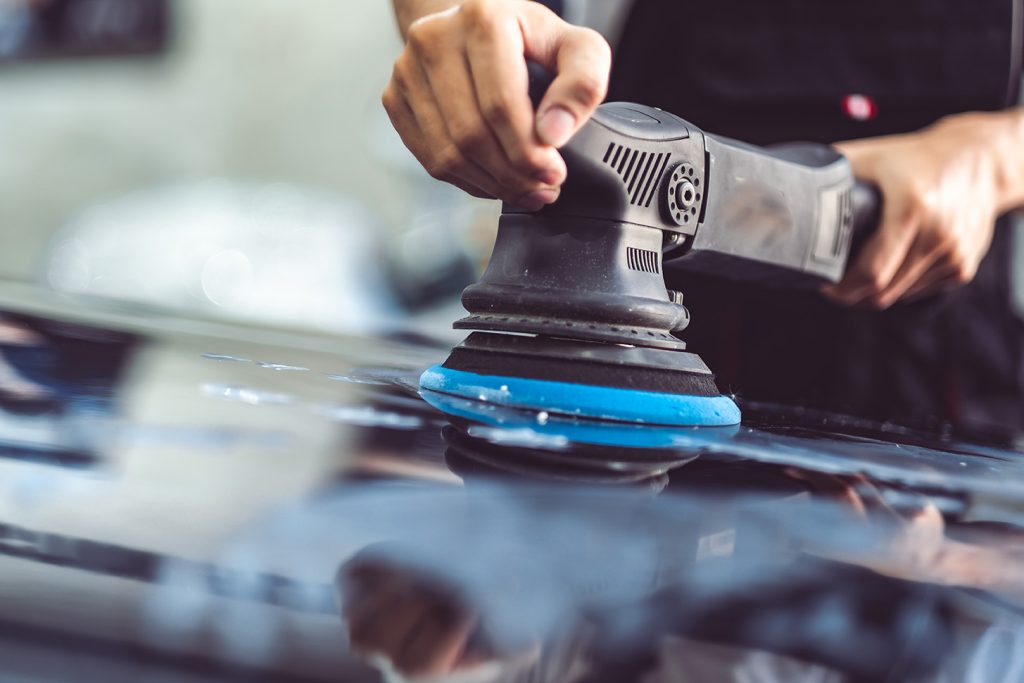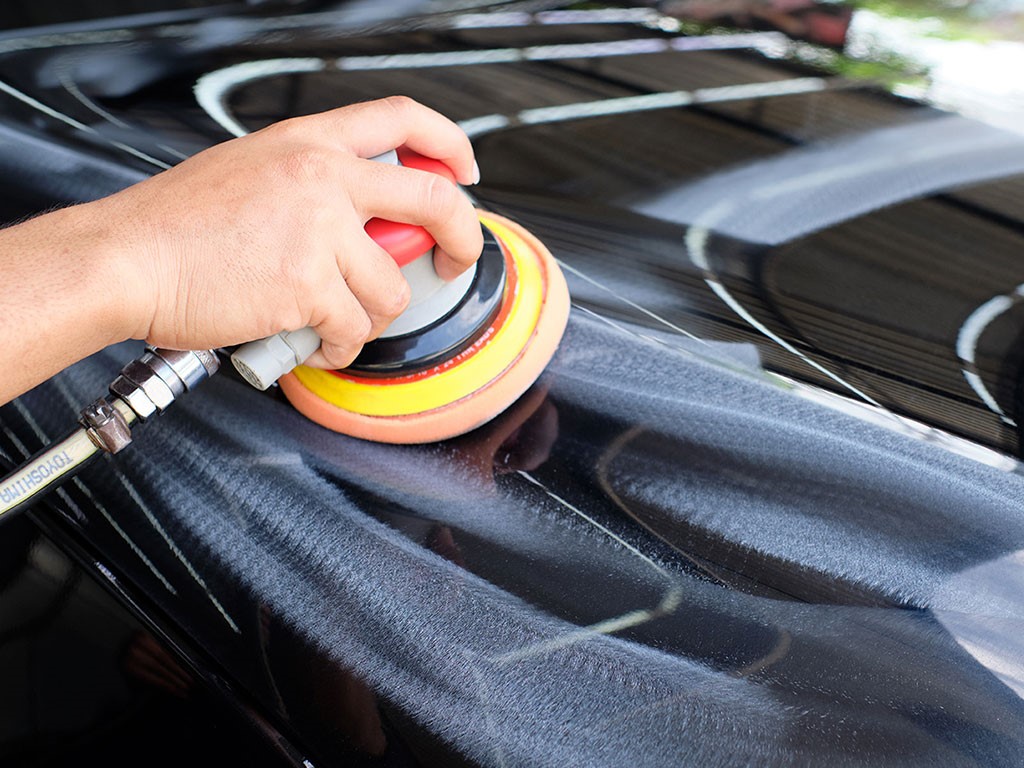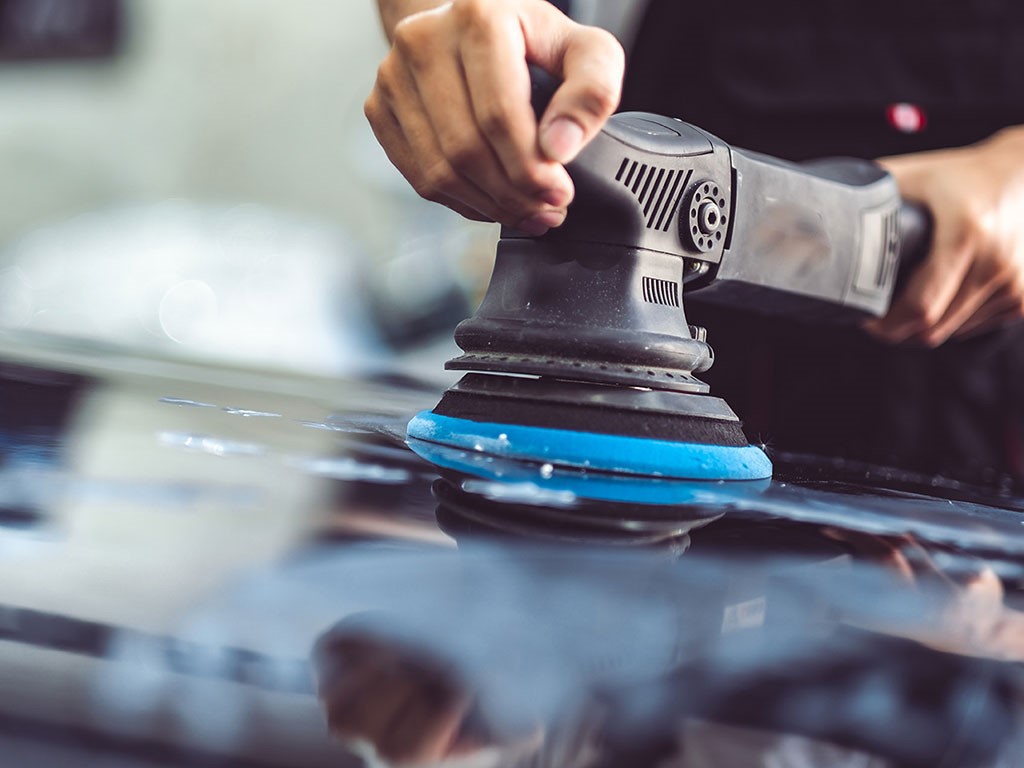Have you ever wondered how some vehicles maintain their showroom shine even after years of being on the road? The secret often lies in a transformative process known as paint correction, which goes far beyond a simple wash and wax routine. This sophisticated auto detailing technique works to restore your vehicle’s paintwork to its original glory by systematically eliminating imperfections like scratches, swirl marks, and oxidation that accumulate over time. It’s not just about making your vehicle look good – it’s about bringing back that new car appearance while simultaneously providing essential protection against future damage.
Understanding the intricacies of paint correction empowers car enthusiasts and everyday vehicle owners alike to make informed decisions about their car care routines. When you grasp the true value of this paint restoration process, you’ll appreciate how it serves as both a cosmetic enhancement and a protective measure that can significantly extend the life of your vehicle’s finish. This comprehensive knowledge becomes your foundation for maintaining your vehicle’s pristine appearance while safeguarding one of your most valuable investments.
Key Takeaways
- Paint correction is essential for restoring a vehicle’s original paint quality and bringing back that coveted new car appearance
- The correction process systematically removes imperfections like scratches, swirl marks, and oxidation from the paint surface
- Professional paint correction services enhance both the aesthetics and resale value of any vehicle
- This technique provides long-lasting paint protection against future environmental damage and wear
Understanding paint correction fundamentals improves overall vehicle maintenance practices and helps car owners make better decisions
Table of Contents
Understanding Paint Correction
The Purpose of Paint Correction
At its core, paint correction serves a vital purpose in the world of automotive detailing – it’s designed to completely eliminate the various surface imperfections that inevitably develop on a vehicle’s exterior over time. Unlike simple paint enhancement techniques that merely mask problems, true paint correction removes swirl marks, light scratches, and oxidation by carefully leveling the clear coat to restore the paint’s original clarity. This meticulous process ensures that your vehicle’s paint finish isn’t just temporarily improved but genuinely restored to its factory condition, giving you that sought-after looking brand new appearance that every car enthusiast desires.
The paint correction process addresses multiple layers of damage that accumulate through regular use, improper car washes, and environmental exposure. By systematically working through the correction stages, skilled technicians can transform a weathered surface into a mirror-like finish that rivals – or even exceeds – the original factory application.
Benefits of Paint Correction for Your Vehicle
The advantages of investing in paint correction work extend far beyond mere aesthetics, though the visual transformation is undeniably impressive. When properly executed, this correction procedure can make your vehicle look like it just rolled off the showroom floor, dramatically enhancing its curb appeal and market value. Potential buyers are naturally drawn to vehicles with flawless paintwork, making paint correction an excellent investment if you’re considering selling your car in the future.
Beyond the immediate visual impact, paint correction offers crucial protective benefits that help maintain your vehicle’s appearance for years to come. By removing the microscopic imperfections that trap dirt and moisture, you’re essentially creating a smoother surface that’s easier to clean and less susceptible to environmental damage. When combined with ceramic coating or paint protection film, the results become even more impressive, providing a robust shield against UV rays, acid rain, and other harmful elements that can degrade your car’s paint over time.
What Is Paint Correction
Definition and Overview of the Process
Paint correction is a process that involves the systematic removal of surface imperfections from a vehicle’s paintwork through careful mechanical polishing. This automotive technique employs specialized tools, compounds, and polishing pad combinations to gradually refine the paint surface until it achieves optimal clarity and gloss. Unlike traditional car detailing methods that focus on cleaning and protecting existing surfaces, paint correction actually restructures the clear coat layer to eliminate defects at their source.
The paint correction explained in technical terms involves using various grades of polish and cutting compounds to carefully abrade the uppermost layer of the vehicle’s paint. This controlled removal process levels out the microscopic hills and valleys created by paint damage, resulting in a perfectly smooth surface that reflects light uniformly. Whether dealing with single stage paint or modern multi-layer systems, the fundamental principle remains the same – systematically refine the surface until all imperfections are eliminated.
Difference Between Paint Correction and Other Methods
It’s crucial to understand how paint correction methods differ from other paint refinement approaches commonly offered in the automotive detailing industry. While paint polishing might temporarily improve the appearance of your vehicle, it typically doesn’t address the root cause of surface defects. Similarly, paint enhancement techniques often rely on fillers and glazes that mask problems rather than eliminate them, providing only short-term results that wash away after a few car washes. For those evaluating long-term protection options after correction, understanding the differences between PPF vs ceramic coating can help determine which solution best complements a freshly restored finish.
True paint correction stands apart because it permanently removes paint defects rather than covering them up. This distinction becomes particularly important when considering the longevity of results – while a simple wax or sealant application might last weeks or months, properly executed paint correction results can maintain their appearance for years when protected with appropriate coatings. The investment in professional paint correction services pays dividends through lasting beauty and enhanced paint protection that simpler methods simply cannot match.
The Paint Correction Process Explained
Preparation Steps for Paint Correction
Success in paint correction begins long before the first polisher touches the paint surface, with thorough preparation serving as the foundation for exceptional results. The initial step involves meticulously washing the car to remove all surface contaminants, followed by a careful drying process that prevents water spots from interfering with the correction work. Professional detailers then employ a clay bar treatment to extract embedded particles that regular washing cannot remove, ensuring the vehicle surface is absolutely pristine before beginning the actual paint correction.
After achieving a contamination-free surface, technicians conduct a comprehensive paint inspection to identify specific areas requiring attention and determine the appropriate correction required. This assessment helps establish which correction stages will be necessary and guides the selection of appropriate compounds and pads for each section of the vehicle. The size of the vehicle and complexity of damage directly influence the planning phase, as larger vehicles or those with extensive defects require more detailed preparation strategies.
Tools and Products Used in the Process
Professional paint correction relies on an arsenal of specialized equipment and products, with the polisher serving as the centerpiece of the operation. Modern detailers typically choose between rotary and dual-action polishers, each offering unique advantages for different aspects of the correction process. These machines work in conjunction with various polishing pad types, from aggressive cutting pads that tackle deep defects to ultra-soft finishing pads that create the final glossy surface.
Tool/Product | Function | Application Stage |
Rotary Polisher | Heavy paint damage removal | Initial cutting stage |
Dual-Action Polisher | Paint refinement and finishing | Secondary polishing |
Cutting Compound | Removes deep scratches and oxidation | First correction stage |
Polish | Refines paint surface clarity | Intermediate stage |
Finishing Polish | Enhances gloss and removes micro-marring | Final stage |
Clay Bar | Removes bonded contaminants | Pre-correction prep |
IPA Solution | Removes polish residue | Between stages |
The selection of compounds and polishes varies based on the type of paint and severity of defects being addressed. High-quality paint correction products from reputable manufacturers ensure consistent results while minimizing the risk of introducing new problems during the correction procedure. Professional-grade materials make the difference between amateur results and the mirror-like finish that exemplifies true paint correcting expertise.
Types of Paint Defects Addressed by Paint Correction
Common Imperfections: Swirl Marks and Scratches
Among the most prevalent issues that paint correction remove are swirl marks and various types of scratches that plague virtually every vehicle on the road. Swirl marks typically manifest as circular patterns visible under direct light, often resulting from improper washing techniques or the use of automatic car washes with dirty brushes. These minor paint defects, while superficial, can significantly diminish the overall appearance of your vehicle and create a hazy, dull finish that obscures the true color and depth of your car paint.
Light scratches represent another category of damage that paint correction addresses effectively, ranging from microscopic marring to more visible lines that catch your fingernail. These defects can originate from various sources – contact with bushes, improper drying techniques, or even sticky paint overspray from nearby construction. The correction process systematically works through these imperfections, gradually refining the surface until the scratch disappears completely and the surrounding area blends seamlessly with the rest of the paint.
Oxidation, Fading, and Water Spots
Environmental damage manifests in several ways that paint correction services are uniquely equipped to handle, with oxidation and faded paint being among the most challenging issues. Prolonged exposure to UV rays breaks down the molecular structure of automotive paint, causing it to lose its vibrancy and develop a chalky, dull appearance that no amount of car wax can remedy. This oxidation process accelerates in vehicles with existing paint damage or those lacking proper paint protection, making timely intervention crucial for preserving the vehicle’s appearance.
Water spots present another common challenge that requires paint correction work to fully eliminate, as these mineral deposits can etch into the clear coat if left untreated. Hard water from sprinklers, acid rain, or even seemingly harmless morning dew can create these stubborn blemishes that resist traditional cleaning methods. Professional paint correction not only removes these spots but also restores the affected areas to their original condition, ensuring your vehicle paint maintains its factory-fresh appearance.
Professional vs. DIY Paint Correction
Advantages of Hiring a Professional
Opting for professional paint correction services brings numerous advantages that extend beyond the obvious expertise factor, starting with access to commercial-grade equipment and products unavailable to the general public. Experienced technicians understand the nuances of different paint layer compositions and can adjust their techniques accordingly, ensuring optimal results without risking damage to your vehicle’s paint. Their trained eyes can identify issues that might escape amateur detection, addressing problems comprehensively rather than focusing only on obvious defects.
The paint correction procedure requires significant skill development through years of practice, something professional detailers have invested in extensively. They understand how different paint correction methods interact with various paint types, enabling them to achieve results that DIY paint correction attempts rarely match. Moreover, professionals typically offer warranties on their work and carry insurance that protects your investment, providing peace of mind that comes from knowing your vehicle is in capable hands.
Risks and Challenges of DIY Approaches
While DIY paint correction might seem like an attractive cost-saving option, it carries substantial risks that can result in expensive mistakes and disappointing outcomes. Without proper training, enthusiasts often struggle to identify the correct polishing pad and compound combinations, potentially causing more harm than good to their car’s paint. The learning curve is steep, and mistakes made during the correction process can result in holograms, buffer trails, or even burn-through that requires professional intervention or a new paint job.
The investment required for quality DIY paint correction equipment can approach or exceed the cost of paint correction performed by professionals, especially when factoring in the compounds, pads, and protective products needed for comprehensive results. Additionally, the time commitment for learning proper techniques and executing the work correctly often surprises first-time attempts, with many car owners discovering that what professionals complete in hours might take them entire weekends to accomplish with inferior results.
Cost and Time Investment for Paint Correction
Factors Affecting the Costs of Paint Correction
The paint correction cost varies significantly based on multiple factors, with the size of the vehicle being one of the primary determinants of pricing. Larger vehicles naturally require more product, time, and effort to complete, while the severity of paint defects directly influences the number of correction stages needed to achieve desired results. Geographic location also plays a role, as automotive detailing prices in metropolitan areas typically exceed those in rural locations due to higher overhead costs and market demand.
The specific services included in a paint correction project can dramatically affect pricing, with basic single-stage corrections costing considerably less than comprehensive multi-stage processes. Additional factors like the type of paint (single-stage versus clear coat), presence of previous touch-up paint work, and desired level of perfection all contribute to the final cost. Providing paint correction services requires significant investment in equipment and training, which reputable professionals factor into their pricing structure.
Typical Time Required for Different Levels of Correction
Understanding how long it takes to complete various levels of paint correction helps set realistic expectations for the process. Basic corrections addressing light scratches and minor swirls might require 4-6 hours for an average-sized vehicle, while more extensive work can span multiple days. The condition of the existing paint, complexity of the vehicle’s design, and desired outcome all influence the time investment required for quality results.
Correction Level | Time Required | Issues Addressed |
Enhancement | 2-4 hours | Minor swirls, light hazing |
Single-Stage | 4-8 hours | Moderate swirls, light scratches |
Two-Stage | 8-12 hours | Deep swirls, oxidation, water spots |
Multi-Stage | 12+ hours | Severe defects, paint restoration |
Show Car Finish | 20+ hours | Complete perfection, clarity of the paint |
The correction required determines not only the time investment but also the complexity of the process, with severe cases potentially requiring multiple sessions to achieve optimal results. Professional detailers often recommend breaking extensive corrections into phases, allowing for thorough work on each section while maintaining the highest quality standards throughout the paint correction procedure.
Enhancing Paint Protection After Correction
After investing in paint correction, protecting the restored finish becomes paramount to maintaining that new car appearance for years to come. Apply a ceramic coating immediately following correction to create a durable barrier that repels contaminants and makes maintenance significantly easier. These advanced coatings chemically bond with the clear coat, forming a protective layer that resists environmental damage while enhancing the paint’s natural gloss and depth.
Paint protection film represents another excellent option for preserving correction results, particularly on high-impact areas like the front bumper, hood, and mirror caps. This transparent film absorbs the damage that would otherwise affect your paint surface, maintaining the pristine appearance achieved through correction. When combined with regular maintenance and proper car care techniques, these protective measures ensure your investment in paint correction continues paying dividends long after the initial service.
The key to lasting results lies in establishing a comprehensive maintenance routine that includes regular washing with proper techniques, periodic decontamination, and timely reapplication of protective products. By following professional recommendations and avoiding harmful practices like automatic car washes with brushes, you can keep your vehicle looking its absolute best while maximizing the longevity of your paint correction results. Whether you choose ceramic coating or paint protection film, the goal remains the same – protect the paint and preserve that flawless finish that makes your vehicle stand out from the crowd.
Frequently Asked Questions About PPF and Ceramic Coating
What are the key differences between PPF vs ceramic coating?
Paint Protection Film (PPF) is a physical, self-healing urethane film that provides a thick protective barrier against rock chips, scratches, and physical impacts. Ceramic coating, on the other hand, is a liquid polymer that chemically bonds to your vehicle’s paint, offering superior chemical resistance, UV protection, and hydrophobic properties. PPF offers stronger physical protection while ceramic coating enhances gloss and makes maintenance easier. The most significant difference is that PPF can absorb impacts and prevent paint damage, whereas ceramic coating mainly protects against chemical damage and environmental contaminants.
Can I use both paint protection film and ceramic coating together?
Yes, using both PPF and ceramic coating together creates an optimal protection system for your car. Many professionals recommend applying PPF to high-impact areas like the hood, bumpers, and mirrors, then applying ceramic coating over the entire vehicle (including over the PPF). This combination provides the physical impact protection of PPF with the chemical resistance, hydrophobic properties, and enhanced gloss of ceramic coating. The ceramic coating on top of PPF can also make the film easier to clean and maintain while extending its lifespan.
How long do protection film and ceramic coating last?
Paint Protection Film typically lasts 5-10 years depending on the quality of the film, installation, and maintenance. Premium PPF products often come with warranties ranging from 5-10 years. Ceramic coating durability varies significantly based on quality and number of layers, with consumer-grade products lasting 1-2 years and professional-grade coatings lasting 5+ years with proper maintenance. Environmental factors, washing techniques, and whether the vehicle is garage-kept also affect longevity. For long-term protection, PPF generally offers a longer service life than most ceramic coatings.
What are the similarities between PPF and ceramic coating?
The choice between PPF and ceramic coating depends on your priorities and budget. If you’re primarily concerned about rock chips, scratches, and physical damage, PPF offers the best protection. If you want enhanced gloss, easier cleaning, and protection against chemical stains with a lower initial cost, ceramic coating may be more appropriate. Consider your driving environment: frequent highway driving might warrant PPF for rock chip protection, while ceramic coating might be sufficient for city driving. Many owners choose a hybrid approach with PPF on high-impact areas (front bumper, hood, mirrors) and ceramic coating for the entire vehicle. Consult with a professional installer who can assess your specific needs.
Should I choose PPF or ceramic coating for my new vehicle?
Despite their differences, PPF and ceramic coating share several similarities. Both products are designed to protect your car’s paint job and keep your car looking newer for longer. Both offer protection against UV rays and environmental contaminants, though they do so in different ways. Neither product requires special maintenance beyond regular washing, though they both benefit from proper care. Additionally, both PPF and ceramic coating represent significant investments in your vehicle that can help maintain its resale value by preserving the paint. Finally, both can be applied to various exterior surfaces of the vehicle, though PPF is typically limited to painted surfaces.
How does cost compare between paint protection film and ceramic coating?
Ceramic coating typically has a lower initial cost compared to PPF. Professional ceramic coating applications generally range from $500-$2,000 depending on the vehicle size and coating quality. PPF is significantly more expensive, with full vehicle coverage ranging from $5,000-$10,000+ and partial coverage (front-end only) starting around $1,500-$3,000. The price difference reflects the material costs, labor intensity (PPF installation is more complex), and durability differences. However, when considering long-term value, PPF may require fewer reapplications over the vehicle’s lifetime. For maximum protection, many owners apply PPF to high-impact areas and ceramic coating over the entire vehicle, which provides comprehensive protection at a middle-ground price point.
What maintenance is required for protection film and a ceramic coating?
Both PPF and ceramic coating require proper maintenance to maximize their lifespan and effectiveness. For PPF, use pH-neutral car soap, avoid automatic car washes with brushes, and don’t wax or polish directly on the film. Most PPF can be pressure washed, but keep the nozzle at least 12 inches away. For ceramic coating, regular washing is important to remove contaminants before they bond to the surface. Avoid harsh chemicals and use ceramic-specific maintenance sprays every few months to refresh the hydrophobic properties. For vehicles with both PPF and ceramic coating, follow the PPF maintenance guidelines, as they’re typically more restrictive. Neither product eliminates the need for regular washing, but both make cleaning easier and reduce the frequency of more intensive detailing procedures.



